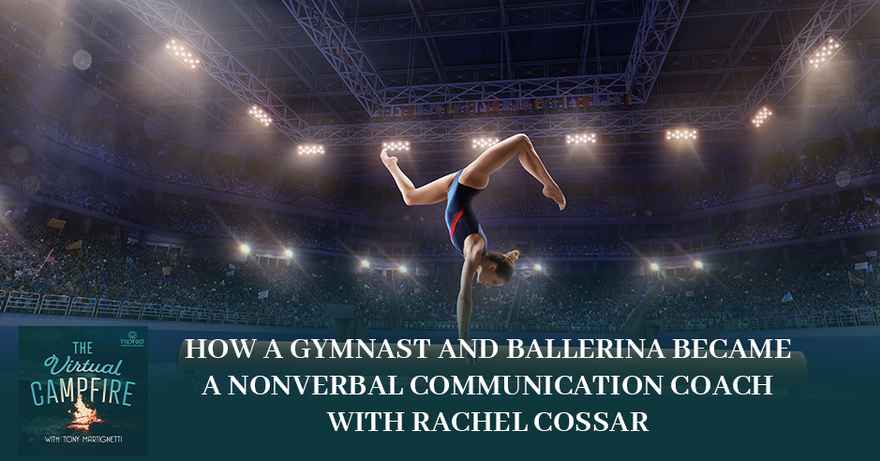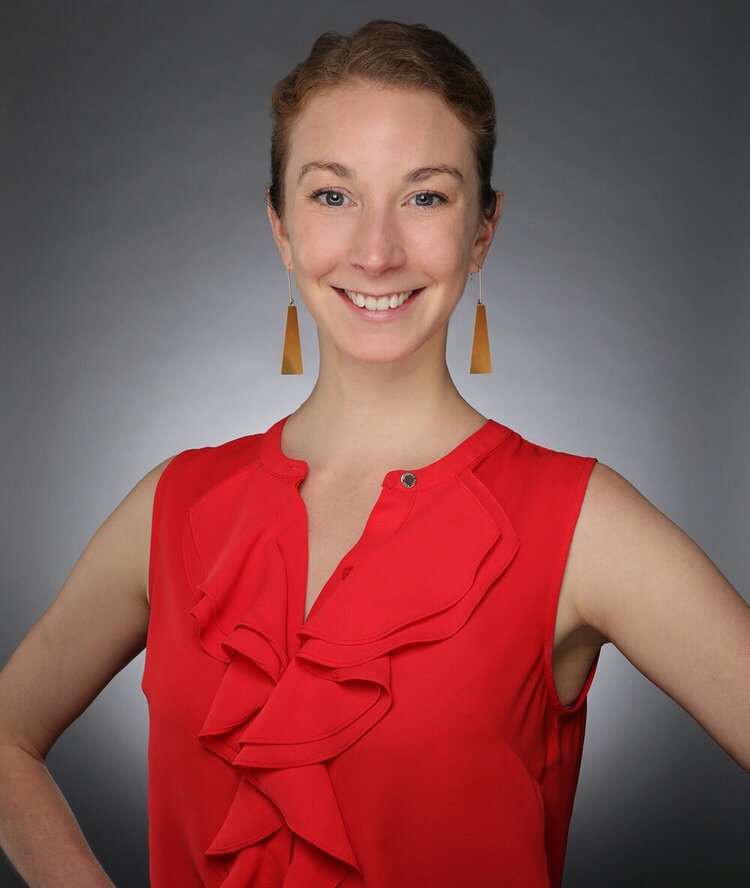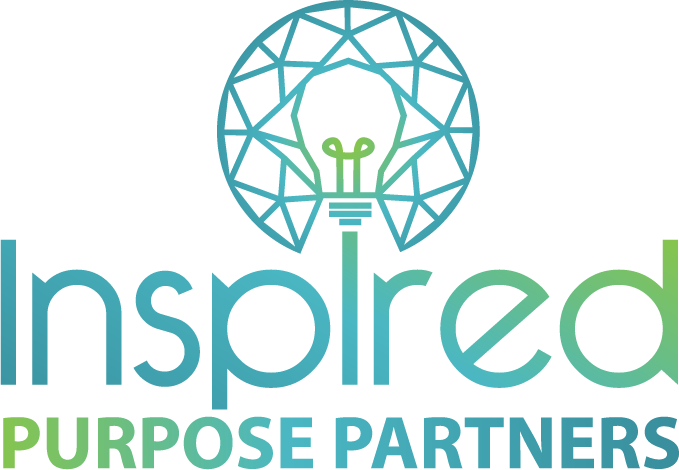How A Gymnast And Ballerina Became A Nonverbal Communication Coach With Rachel Cossar

In today's episode, Rachel Cossar shares her flashpoints of how she went from being a gymnast to a ballerina to becoming a nonverbal communication coach. Rachel is the founder of Choreography For Business, wherein she teaches people how to use their bodies for effective nonverbal communication. As a high-level athlete and professional ballet dancer, Rachel knows the power of the physical human body to project a strong presence and a sense of leadership. Her story demonstrates that you don't have to deny your past experiences to bring value to the people around you. Tune in and be inspired to reinvent yourself while always staying true to your passion!
---
Listen to the podcast here:
How A Gymnast And Ballerina Became A Nonverbal Communication Coach With Rachel Cossar
Rachel Cossar has unparalleled expertise in nonverbal communication and live performance. She was on the Canadian Rhythmic Gymnastics team, competing and representing Canada internationally. From this career, she joined the Boston Ballet, performing lead roles in front of audiences at the Boston Opera House and on stages across the globe over the course of a decade. On the tails of her performance career, Rachel Founded Choreography For Business, a body language and presence firm. Rachel has been coaching professionals on how to be more human on video, leveraging the tools, technology provides to connect and drive impact truly. She grew up in Toronto, Canada, and lives in Boston. It is my honor and privilege to welcome you to the show, Rachel.
Thank you, Tony. It's an honor to be here. Thank you for having me.
I'm intrigued by what you do. I've been exposed already and read a lot about the stuff that you do. It's cool that, especially in this day and age, people need what you offer. I'm looking forward to digging into your story to see what brought you into this world. It's exciting. We will help you to share your story but it's through the vehicle of what's called flashpoints. These are moments in your story that have ignited your gifts into the world. They could be something profound and deep, like a traumatic event or they could be something that you had to change and shift in your world. Share what you’re called to share. We'll stop along the way and see what's showing up. With that, Rachel, the floor is yours.
That's quite the red carpet you've rolled out, Tony. Thank you. In terms of flashpoints, I grew up in Toronto but I was born in the UK. Most of my family lives over in the UK, England and Scotland in particular. I moved over to Canada when I was three and pretty quickly joined a local ballet troupe, piddling around in the dance studio. It was not anything serious. Two years later, I started rhythm gymnastics. Right from an early age, relatively speaking, I was doing both endeavors.
Looking back, there was a lot of tension between the two, in the sense that they each wanted me to focus on their own. From my perspective and the perspective of my family, they were related that it made more sense to do both at the same time and get to transpose skills from one on to the other. In terms of a flashpoint, while this was happening over many years, there were many points where there was that pressure to choose. It’s because of the way I was brought up, always doing those two things and coming under that pressure to choose and never choosing, having my cake and eating it too, as they say. I have also had this tendency to view these very different worlds and be energized by the potential of bringing skills, values, and perspectives from one world and transposing them onto another.
As an element of first recognizing that, oftentimes, people struggle with their family pulling them in one direction. It sounds like you had a supportive family, though. They said, “We trust you to make the right choices.”
I have an incredibly supportive, talented, and also, visionary family. I could never take the credit for pushing through all of those years of hard training without the vision that my mother had or the support of my father. There were many times when I wanted to quit because it was hard. When you're a thirteen-year-old, you're like, “I'd much rather be normal and go hang out with my friends. Thank you very much.”
The challenge that many people face is that they’re like, “Is this going to be something that I'm going to take further? Is this going to be a career? Is this something that is truly worthwhile pursuing? Is it a passion?”
Oftentimes, there’s this narrative of, “You’re a ballerina? You must have dreamed of being a ballerina. You're so lucky to have been able to live out that dream.” That is a narrative for some professional ballet dancers. For myself, I never had that dream. I never was like, “I'm going to be a ballerina when I grow up.” I was pretty practical. I wanted to be a doctor and a dentist but I loved dancing. I feel grateful that I was able to keep leveling up. I was in the right place at the right time. I got the right training. I had this unique perspective. Within the ballet world, I came with this dynamic athleticism that no other dancers had, frankly. It was because of my gymnastics, this extreme flexibility, contemporary style of movements. Moving through that and being able to see it come to life professionally was amazing, but I didn't have that dream. That's an important thing to share.
It makes me think of the whole thought about being non-attached to it. You treat it like almost a hobby and not a livelihood. It’s because of that, you went in and played.
Leave all the pain of the past behind, start fresh on a clean slate, and say hello to the new and improved version of you.
I was serious and intense about it. I am still an intense person. It was more like, “Let me try this out.” When I was seventeen, I spent the whole year doing rhythmic gymnastics only and traveling the world. I did well but I was off for the Olympics. The Olympics come once every four years for Summer Olympics. The Beijing Olympics were happening that year and I was number two. Of course, number one, in Canada went. I would have had to wait an entire four other years to go to the Olympics and I was not doing that. I made the decision that year to transition into the world of ballet. It’s because I've been doing these two things at the same time, I didn't have the same path through the ballet world that would place you in a stronger position to get a job in a company.
There was a lot of doubt as to whether or not I would have maybe had waited too long to make that transition. When I went through that transition and gave it a go, as they say, it was almost out of curiosity. It was like, “Let's give it a shot and see what happens.” That was the year that I moved to Boston, in 2006. I joined the trainee program at Boston Ballet, which was the top level of the school. They had a great relationship with the company. You got to be exposed to company life. I was like, “I'll throw my hat in and we'll see.” Every day and every year subsequent to that was like a gift. I was like, “I'm unlocking the next level.” It's amazing. I'm very grateful for it.
In essence, we stumbled our way into the second flashpoint, if you will, which was realizing that you were going to go after this, the ballet as being the next thing for you and that big decision point. Would you say that's it? How would you describe that next moment that you had in terms of flashpoints?
There's a flashpoint of ending up in Boston and walking in the studio that first day and looking around me and having a moment of like, “I don't know if I can do this.” I was such a gymnast and I was ranked highly in Canada and all of a sudden, I was in this Ballet School in Boston. I was like, “This is strange.” That was a flashpoint of being deposited into a new world and then knowing, like, “I'm going to have to go for this if this is going to even have a chance of working out.” Over the course of the next couple of years, there were a few other flashpoints where it became clear that I could do this. Boston Ballet was looking for a tall, dynamic dancer. I was in the right place at the right time with the right ingredients.
You had to prove yourself but also prove it to yourself, which is a starting point. It's an inside job.
There was a little bit of like, “Hopefully, they don't realize that I don't have the most classical ballet training in the world. It’s not even close.” I was convincing myself that I could fake it.
On the outside, people are thinking to themselves that it's great that you have that background of the two worlds being able to bring that together. The genius of it all is that you have that unique background that makes you stand out.
That, I did not doubt. The roles that I got, particularly in the contemporary world were largely contributed to the fact that I could move in this alien-like way.
Tell me more about what happens next. You are in that world for a long time. How many years in total, professionally, did you do ballet?
In total, I did ten years, 2006 to 2016. There was a progression. There were two years in the trainee program. I then was offered a contract as a dancer with Boston Ballet too, which is the apprentice company. Two years after that, I was offered a full contract with the company where I stayed from 2008 to 2016.

What went through your mind as you got to the end of that period in 2016? What made you consider this thought about moving on? Is this something that naturally happens for ballet dancers?
All dancers retire early with respect to your normal span of a career. In 2013, I got very injured. It’s an ankle injury. I took a whole year off. I needed surgery. At no point was I like, “This is going to be the end of my career.” I had gone through injuries before. I was like, “This is an injury like another. I'll come back stronger than before.” When I was recovering from the surgery, it became clear that this was not like all the other times. It was this nefarious injury. People were not sure what was going on, why the pain was stubborn. There was a little bit of a loss of this confidence that I had coming back from this injury where I was never able to find this sense of abandonment when I was dancing again. I was always in protection mode from that recovery onwards. I did make it back. I had one good year of dancing and then the pain came back the year after that. That would have been in 2015.
I remember I was doing Nutcracker in 2015 when I was on stage in so much pain still. I was on stage when I was like, “This is the last Nutcracker that I will ever do.” It was. A few months after that, early 2016, I had a conversation with Mikko, the Artistic Director. He was like, “I can't offer you a contract. You have one body. You're putting the rest of your life in jeopardy now. Responsibly, I can't offer you a contract.” That was shocking. Also, I knew that it was right. I did need a little bit of a push to be like, “This is the end.” I finished out the season there until May 2016. I was able to have a few more performances on stage, relatively pain-free because I had completely decreased the amount of dancing I was doing and the amount of stress. I had a partnership with artistic direction to do only those parts that I could do comfortably instead of hiding it. Before, I was like, “I'm fine.” It's like, “You’re not.” I retired in May of 2016.
The emotional toll on you at that point, how did it feel? You’re like, “What do I do with myself?” Walk me through.
It's fascinating because the things that I was worried about when I decided to retire, I ended up not having to worry about. I was worried that my body would not like the fact that I wasn't dancing nine hours a day anymore or that I would never be able to gain satisfaction physically ever again. On that note, my body loves the fact that we weren't dancing nine hours a day anymore. From an emotional perspective, it was like going through a serious breakup. You've been with someone for ten years and they're very much a part of you. The relationship had a heyday and then it started to lose its steam a bit in the end. It wasn't good for you anymore. When you finally do have the courage to leave that person, you have this honeymoon phase of the breakup where you're like, “I should have done this years ago.” You're free.
I retired and then I spent 2.5 months traveling. I had never had more than ten days off in my life. It was incredible. When you're traveling, everything's new. There's so much to experience and explore. It was wonderful. When I came back to Boston, I had this super crash landing where it was like coming back to the apartment that you shared with that person. All of their stuff is still there. They're gone. You realize you have to clean out the space and reinvent it. In reinventing it, before you can even get to that part, you have to reckon with what you lost. That was hard. I did not expect it to be that hard.
First of all, I feel it because the way you described it is visceral. It's true for many things. Sometimes you want to turn your back on the past and say, “That happened. Let's move forward and deal with it.” The reality is, in some ways, you have to face those things. You have to face it and embrace that past so that you can move forward because it doesn't go away. That was what you were going through at that moment.
When I was dancing, even when my career was at a highlight, I had known that I was going to do something after dancing. I had always had this idea of doing something else once I left. When you come to face it with such a specialized background, I was like, “How am I going to make this relevant to anyone?” It felt like leaving it all behind and starting fresh, a clean slate. A new person was probably the more efficient way to go. I didn't end up doing that, of course, but it can feel that way at times when you're going through a transition like that because it's painful.
---
We're coming to that point where we start to see how we take the past, embrace it, and move forward. Tell me what happens next. How did you get your wheels moving in that reinvention?
It's all in the way you approach the situation from a mindset perspective.
What was important for me was getting structure back in my life because I was in this void. I had this huge structure that was giving me all of the direction that I'd ever needed. All of a sudden, it was gone. As much as I hated the idea of it, I needed a 9:00 to 5:00. I needed to get on track. I interviewed around and finally ended up at Harvard, of all places, in their fundraising offices. I worked there for a year. I was looking at my resume and I was like, “If I want to do anything that's not dance-related, I need to have a recognizable brand name that shows to the world that I can also flourish in the more traditional workspace.”
Harvard was a dream. Also, it was a pretty entry-level job. It wasn't going to be a 100-hour a week situation. I wanted to make sure I was giving myself space to continue to explore, try things out, take classes, and whatnot. I had gotten my undergrad while I was dancing. A lot of dancers don't go to school while they're dancing because you don't have time. Once you retire, you have to go back to school. I didn't have to do that so I could enter the workforce.
While I was at Harvard, one of the things I noticed was that nobody was showing up physically. I myself, in those first few weeks, I was thinking of the job as non-physical because, by my standards, it was. What I realized was in showing up and not activating myself physically and not moving through space as a physical human and leaving it out of my communication that I was low energy. I didn't feel connected and all this other stuff. I was like, “Wouldn't it be interesting if I could bring some of this physical experience that I used to be my day-to-day into this ‘non-physical’ world?” That was the first time that I started thinking in this way.
I'm excited because I feel that energy. For me, as a coach, I always think about energy leadership as being this concept that we're always managing our energy and not our time. It's about figuring out how can you bring yourself into the room and be at that best place. Oftentimes, when people are sitting around, they're not being in their power because they're not moving. They're not feeling anything. They're just sitting. The way you're describing this so far makes me feel that way. It's like, “If you're sitting at your desk, you're not moving. You're not feeling any energy at all. You're becoming robotic, almost.”
The thing is, sitting can be a physical endeavor. Standing can be a physical endeavor. It's all in the way that you approach it from a mindset perspective. Especially now, where we're spending our day with a screen, it's easy to have your body take the backseat.
This idea comes to your mind and you're thinking, “I've got to do more. I got to bring this into my world right now as I'm doing this job.” How did you decide that this became something that you would do for others?
I tested it out with the restaurant industry first. While I was dancing, I'd written a food blog. I had all these connections in the restaurant industry. I was like, “That's physical.” That's an undeniably physical experience. Working in a restaurant is hard. I went to some of my contacts in the restaurant scene and I said, “Would you be interested in a movement mechanics class where I teach how to stand, how to move, how to do all this stuff sustainably, and how to then go through service with presence?” They were all interested in it. How I tested it out and started building programs and designs was in the restaurant industry.
At first, you're probably freaking out, like, “Is this going to work?”
When I was teaching people, it felt right. It felt like it was resonating with people's bodies. It was such a physical thing it was fascinating to see people's bodies come alive while I was teaching them. By the things I was picking up, I knew that it was the right thing. I knew that it had value. I didn't know if it was the right thing, necessarily, but I knew it had value. That was encouraging to me at an early stage. Also, it was resonating with people. Anyone I told would be like, “That makes perfect sense.” That was also reassuring.
The moment where I realized that it could go beyond the restaurant scene was when I was speaking about this with some colleagues at Harvard and they were like, “We could use some of this.” That was when I was like, “This more traditional world of your 9:00 to 5:00 office job, maybe there is a space for presence, body language, and physicality.” It was not something that I would ever have considered. In my dancer’s mind, I was like, “You go to your 9:00 to 5:00 to become a blob.”

I think of that whole concept of Wall-E, the Pixar movie, where people get everything done for them. Before you know it, we become these blobs with a sedentary lifestyle and it's unfortunate. It makes you want to get up from your chair and run for the outdoors and do something in nature.
That one scene in that movie, I always think about it. I’m like, “That is my worst nightmare.”
You started to get into this feeling, where you're going to do this with companies, with organizations and it starts to take off.
That was the most interesting thing. As I started building this company and exploring this ecosystem, I discovered all this stuff that had existed for years, body language, nonverbal communication, consulting, coaching, and somatic embodiment work. I had zero ideas of any of this stuff, except that it was all intuitive to me and not even having to go down the path of learning about this stuff. The way that I thought as a dancer was already much in line with some of these disciplines. Creating my own practice around it was possible. It’s rooted in performance culture and ballet.
There is an element of the gift in this. You took something that you have naturally had strength in and you were able to build on that. It became something that grew. For people who are reading and they're saying to themselves like, “I have this interest or strength in one area.” It doesn't mean you have to have all the answers. They build on each other. That's where the passion gets built from, starting with something and then you build from there.
I'm glad you brought that up. Going back to what we were talking about, this idea of reinvention, not having to be about becoming someone different or leaving behind past skills. What do you have that you either are passionate about or that is unique to your experience? How could it be a value moving forward? It's easy, especially when you're moving from one world into the unknown, to discount everything you know. That was something that I was also very aware of when I was moving into this space. Within the coaching world, there's a lot of pressure to get this certification and that certification to validate yourself as a coach and there's nothing wrong with that. However, I was like, “I want to develop my own body of work first because there's something there before I start going through any other certification, accreditation processes. I want to value my experience first.” There will be holes, knowing that it's not going to be complete. There's something to explore and honor there as a first step.
The term I like to use comes from one of my coaches is, “Transcend and include.” You include your past but you transcend it by continuing to build from there. That's the beauty of that. There is an element of not turning your back on that. It includes it. As you look back and you say, “Here I am now. I've arrived at this place in my world.” What are the biggest lessons that you've taken away from your journey that you want to make sure people learn about? Maybe 1 or 2 things that come up for you and you say, “That's the biggest thing that I've learned for myself and I want to make sure people learn that.”
There's a lot. It's hard to pick a couple of things. One that immediately comes to mind is never undermining the importance of your human physical experience, knowing that it's easy to become distracted from it. It's easy to focus on content, accomplishments, desires, or whatnot. No matter what you do, make sure that you're always giving yourself that fully embodied present experience. For me, that starts with the body. It’s because I was injured, I neglected my body as a dancer. For me, that's a huge lesson.
The other thing that I've brought with me is the value of a good performance. I love the feeling of connecting with an audience and bringing my full self to a performance. What is categorized as performance varies. In this virtual world, I'm like, “Why shouldn't a presentation in front of 40 squares of other virtual people be at performance?” If so, how do you change the way you present? What other tools do you have to leverage to make that performance resonate with people?
It makes me want to ask one more question, a follow-up to that. What is your opinion on improvising? It sounds like performance is powerful and important to you. Are you comfortable with that improvisation as being a tool to let yourself go free?
Honor and value your experience because it's what makes you unique.
I'm a huge proponent of improv. As a dancer, I love to improv. I take improv classes all the time. From more of an acting perspective, that skill is great. A lot of people might think of improv as you go out and do whatever comes to mind. No. There's a lot of structure to successful improv. I enjoy improv. I rarely do anything scripted. To be perfectly honest, the one thing that I did a script was a TED Talk. It was nerve-wracking knowing that I had a fifteen-minute talk, every single word of which was intentionally chosen. There was zero room for improv. That was scary.
It was fantastic, by the way. I saw it.
Thank you.
I developed the TED Talk myself. I haven't performed it yet. That's a performance I plan to take care of at some point. It's nerve-wracking, for sure. Every word and how it lands, it’s a lot of work to put that together. Kudos to you. It is fantastic. Great job.
I love the points you made. Those are powerful and it's something that people who are reading are going to learn and say, “Yes, I feel that.” What is one book that had an impact on you and why? It can be more than one book. Most people break the rules. Share what you'd like to share.
This book is random for everything that I've said but it is a sci-fi novel called Snow Crash.
I've never heard of that. I'm going to have to dig this in. Tell me more.
Neal Stephenson is one of the top sci-fi authors. My husband read these books a few years ago. He was raving about them. Honestly, I wasn't reading for pleasure. I was reading professional development books on nonverbal communication, body language, and all this stuff. I wasn't reading for pleasure. He read these books. He was raving about them. It was almost hard for me to understand. It had been long since I read a book for enjoyment that I was like, “Okay. Whatever.”
During the pandemic, I picked it up and read it. It’s this book written in the ‘90s. It's about a world in which the real world exists, a big huge part of it happens in LA, but there's a multiverse that coexists with our reality. You can dip into the multiverse. You create your avatar. You are this persona of whoever you want to be. Even within the multiverse, there exists this hierarchy, except it's the coders who reigned supreme in the multiverse. It's this super fun, quirky, well-written, engaging book. The reason that I bring it up is that it encouraged me to lean into human solutions through technology. Not replacing humans with robots, but allowing people to feel more human because of tech. That's one thing. The other thing is it was honestly enjoyable that it got me back into reading for pleasure, which I hadn't done in a while.
That sounds amazing, honestly. It almost reminds me of Ready Player One, which is another cool book. I'm going to have to dig this book out. Thank you for bringing that. That’s unique. I don't think we're going to have that book recommended by anyone else for any of the reasons but it's unique. Thank you.

It's good. I could not recommend it highly enough. Also, I'm reading another book by Neal Stephenson called Seveneves. These sci-fi books are like bricks. I also highly recommend it.
I’m going to see if they have it on Audible.
It's 100 hours of your life.
I can't thank you enough for coming to the show. This has been amazing. A lot of the things that you do have to be experienced and seen. You have some stuff on your website that you share. I want to make sure I give you a chance to share where you can be found and some of the resources you have available. Where can people find you?
My website is ChoreographyForBusiness.com. Everything I offer can be found on that website. You can reach me directly at Rachel@ChoreographyForBusiness.com. I'm also on Instagram, @RachelOnPointe. I did come out with an eBook all about virtual presence in communication and best practices this summer. There are videos, photos, etc. It's an engaging read that's accessible to people. That also can be found on my website. There's the TED Talk. I encourage people to give that a listen.
I'm grateful that you came on the show. This is enjoyable.
Thank you, Tony. I feel like we could keep chatting. I had a great time and a fun way to sift through history.
Thank you so much. Thank you to the readers for coming on the journey with us. Hopefully, you go and reach out and find out more about Rachel's work.
Important Links:
- Choreography For Business
- Snow Crash
- Ready Player One
- Seveneves
- Rachel@ChoreographyForBusiness.com
- @RachelOnPointe - Instagram
- TED Talk - The Muscle of Reinvention: Building on Past Identities by Rachel Cossar
About Rachel Cossar
 Rachel Cossar has unparalleled expertise in nonverbal communication and live performance. She was on the Canadian Rhythmic Gymnastics team, competing and representing Canada internationally. From this career, she joined the Boston Ballet, performing lead roles in front of audiences at the Boston Opera House, and stages across the globe over the course of a decade.
Rachel Cossar has unparalleled expertise in nonverbal communication and live performance. She was on the Canadian Rhythmic Gymnastics team, competing and representing Canada internationally. From this career, she joined the Boston Ballet, performing lead roles in front of audiences at the Boston Opera House, and stages across the globe over the course of a decade.
On the tails of her career with Boston Ballet, Rachel immersed herself in major gift fundraising at Harvard University and New England Conservatory. With her expertise in building trusting relationships, communicating effectively and with a full force of nonverbal and verbal communications skills, Rachel founded Choreography For Business, LLC.
As the founder of CFB, Rachel focuses first on the physical parameters of communication, presence and leadership in professional settings. Blending her skills as a high-level athlete, professional ballet dancer and major gift fundraiser, Rachel has designed revolutionary programming that teaches people how to immediately alter the way they show up and perform under pressure.
Rachel’s work is dedicated to strengthening human experiences in business and beyond.


0 comments
Leave a comment
Please log in or register to post a comment